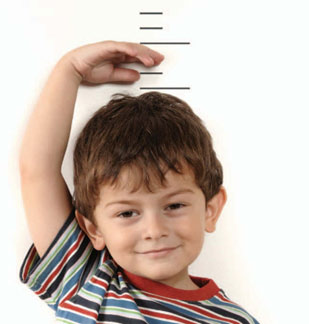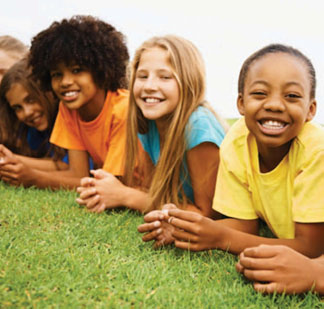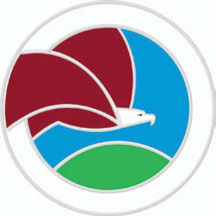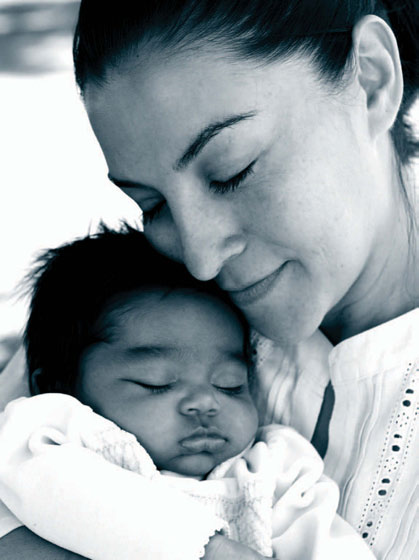










U.S. Department of JUStice
n
DrUG enforcement aDminiStratio
GROWING UP DRUG FREE
A PArent’s Guide to Prevention
The Drug Enforcement Administration’s mission
is to enforce the controlled substances laws and regulations of the united states and bring to the criminal and civil justice of the united states, or any other competent jurisdiction, those organizations and principal members of organizations, involved in the growing, manufacture, or distribution of controlled substances appearing in or destined for illicit traffic in the united states; and to recommend and support non-enforcement programs aimed at reducing the availability of illicit controlled substances on the domestic and international markets. www.dea.gov
The U.S. Department of Education’s mission
is to promote student achievement and preparation for
global competitiveness by fostering educational excellence
and ensuring equal access. www.ed.gov
GROWING UP DRUG FREE
A PArent’s Guide to Prevention
u.s. department of Justice
drug enforcement Administration
and
u.s. department of education
october 2012
This publication was funded by the Drug Enforcement Administration under contract number D-11-CP-0032, and in collaboration with the U.S. Department of Education. The content of this publication does not necessarily represent the positions or policies of the Drug Enforcement Administration or of the U.S.
Department of Education, nor does the mention of trade names, commercial products, or organizations imply endorsement by the U.S. government. This publication also contains hyperlinks and URLs for information created and maintained by private organizations. This information is provided for the reader’s convenience. Neither the Drug Enforcement Administration nor U.S. Department of Education is responsible for controlling or guaranteeing the accuracy, relevance, timeliness, or completeness of this outside information. Further, the inclusion of information or a hyperlink or URL does not reflect the importance of the organization, nor is it intended to endorse any views expressed, or products or services offered. All URLs were last accessed in September 2012.
Drug Enforcement Administration
Special Agent Michelle M. Leonhart
Administrator
U.S. Department of Education
Arne Duncan
Secretary
October 2012
This report is in the public domain. Authorization to reproduce it in whole or in part is granted. While permission to reprint this publication is not necessary, the suggested citation is: Drug Enforcement Administration and U.S. Department of Education, Growing Up Drug Free: A Parent’s Guide to Prevention, Washington, D.C., 2012.
Copies of this report are available online at the DEA’s website at www.getsmartaboutdrugs.com and on the Department of Education’s website at www.ed.gov/about/offices/list/opepd/ppss/reports.html/.
On request, this publication is available in alternate formats, such as Braille, large print, or CD. For more information, contact the Department’s Alternate Format Center at 202-260-0852 or 202-260-0818.
Notice to Limited English Proficient Individuals
If you have difficulty understanding English, you may request language assistance services for Department of Education information that is available to the public. These language assistance services are available free of charge. If you need more information about interpretation or translation services, please call 1-800-USA-LEARN (1-800-872-5327) (TTY: 1-800-437-0 833), or email us via the following link to our customer support team: Ed.Language.Assistance@ed.gov/.
ii
U.S. DrUg EnforcEmEnt ADminiStrAtion • U.S. DEpArtmEnt of EDUcAtion
CONtENts
Section 1: introduction – How This Book Will Help You.......................................................................1
did You Know … ...................................................................................................................................................................1
How to use this Booklet ..................................................................................................................................................1
what do You Believe?.......................................................................................................................................................3
Myth #1: My child isn’t exposed to drugs and wouldn’t do them anyway ...........................................3
Myth #2: it’s normal for kids to experiment with drugs ...............................................................................3
Myth #3: i can’t change my child’s future ..........................................................................................................3
Myth #4: My kids don’t care what i think ...........................................................................................................4
Myth #5: it’s okay for me to use BeCAuse i’m an adult ..............................................................................4
Myth #6: i don’t want to alienate my child by being too strict .................................................................5
Section 2: What Substances Do Kids Use? ........................................................................................... 7
tobacco ..................................................................................................................................................................................7
Alcohol ....................................................................................................................................................................................8
Alcohol Poisoning .......................................................................................................................................................9
Household Products: inhalants ......................................................................................................................................9
over-the-Counter (otC) Medications ....................................................................................................................... 11
Prescription Medications ................................................................................................................................................ 11
Anabolic steroids ..................................................................................................................................................... 12
street drugs ........................................................................................................................................................................ 13
Marijuana ..................................................................................................................................................................... 13
stimulants..................................................................................................................................................................... 14
Heroin............................................................................................................................................................................. 14
synthetic drugs ................................................................................................................................................................. 15
Section 3: Why Do Kids Use Drugs? .....................................................................................................17
risk Factors and Protective Factors ......................................................................................................................... 17
risk Factors ........................................................................................................................................................................ 18
Academics .................................................................................................................................................................... 18
Your own Alcohol, tobacco, and drug use ................................................................................................... 18
Genetics ....................................................................................................................................................................... 19
online environmental risks ................................................................................................................................... 19
other environmental influences .........................................................................................................................20
GrowinG uP druG Free: A PArent’s Guide to Prevention
iii
Protective Factors ............................................................................................................................................................ 21
Family time ................................................................................................................................................................. 21
open Communication ............................................................................................................................................. 21
other role Models .................................................................................................................................................... 21
rules and Consequences ...................................................................................................................................... 22
Positive Activities ..................................................................................................................................................... 22
school and Community ......................................................................................................................................... 23
Section 4: How Do i Teach My child About Drugs? ........................................................................... 25
educate Yourself .............................................................................................................................................................. 25
educate Your Child ......................................................................................................................................................... 25
Be an involved Parent .................................................................................................................................................... 26
Be involved at Home ............................................................................................................................................... 26
Be involved in Your Child’s social Life ............................................................................................................. 26
Be involved at school ............................................................................................................................................. 27
Be involved in the Community ............................................................................................................................ 28
Be a Good role Model ................................................................................................................................................... 29
Communicate no tolerance for substance use .................................................................................................. 29
talk with Your Children About drugs ..................................................................................................................... 29
talking with Preschoolers .................................................................................................................................... 29
talking with elementary school students (6–10 years old) ..................................................................30
talking with Middle school students (11–14 years old) ............................................................................. 32
talking with High school students (15–18 years old) ................................................................................34
Section 5: What if i Think My child is Using Drugs? ......................................................................... 37
signs of Abuse ................................................................................................................................................................. 37
is it okay to snoop? ....................................................................................................................................................... 38
How to Proceed ................................................................................................................................................................ 38
Addiction ............................................................................................................................................................................40
Finding treatment ...........................................................................................................................................................40
recovery .............................................................................................................................................................................. 41
Section 6: resources ............................................................................................................................43
For Youths ..........................................................................................................................................................................43
For Parents ........................................................................................................................................................................44
Section 7: Drug identification chart ...................................................................................................49
iv
U.S. DrUg EnforcEmEnt ADminiStrAtion • U.S. DEpArtmEnt of EDUcAtion


inTroDUcTion –
HoW THiS BooK Will Help YoU
sECtION 1:
introduCtion – How
tHis BooK wiLL HeLP You
Section 1: introduction – How This Book Will Help You
Parenting can be the most current when you communicate with
rewarding job on earth —and
your child about drugs and alcohol.
HoW To USe THiS
sometimes the toughest. You
BooKleT
cradle your newborn the first time and DiD YoU KnoW …
Rather than reading this publica-
promise, either silently or aloud, to
According to a national survey called
tion from front to back as you would
provide the best life possible for him
Monitoring the Future (MTF) taken
read a book, we hope you will use
or her. The years quickly fly by—and
in 20111
the Table of Contents to find a topic
suddenly, your youngster is about to
❯
Daily marijuana use is now at a 30-
that interests you or to find a specific
enter school.
year peak level among high school
substance you’d like to know more
If you’re like most people, that is a
seniors. One in every 15 high
about. We’ve also included some per-
scary day. How will little Sara react to
school seniors today is smoking
sonal stories from parents who’ve lost
being away from me? What will happen
pot on a daily or near daily basis.
children to drugs and a Resource sec-
if Noah misbehaves? Will the teacher
tion in the back that suggests online
❯
provide the attention that Riley needs in
Energy drinks are being consumed
sources where you or your children
order to learn?
by about one-third of teens, with
use highest among younger teens.
can learn more.
As your child grows older and
These drinks are particularly
continues to achieve new milestones,
dangerous—even deadly—when
your concerns grow, too. Can I trust
consumed with alcohol.
Sara being home alone after school until I
get home? What will Noah do if his friends ❯ Although rates of smoking have offer him a cigarette? Will Riley’s friends
declined among youths, 40
tempt her to try drugs?
percent have tried cigarettes by
12th grade, and 10 percent of 12th
These types of worries are normal and
graders are daily smokers.
show that you are a loving, attentive
parent who wants what is best for
❯ Alcohol remains the most widely
your child. Reading this booklet also
used drug by today’s teenagers.
shows that you are concerned and that
Despite recent declining rates, sev-
you want to help your child achieve
en out of every 10 students have
a healthy, drug-free lifestyle from
consumed alcohol (more than
preschool through high school—a
just a few sips) by the end of high
dozen or so critical years when
school, and one-third of students
attitudes about drug use are formed.
have done so by the eighth grade.
Many school districts across the
❯ One of every nine high school
country have had to cut funding for
seniors said they’ve used
alcohol and drug education programs,
synthetic marijuana, sometimes
making it even more important that
called K2/Spice, within the
you are informed, consistent, and
previous 12 months.
GrowinG uP druG Free: A PArent’s Guide to Prevention
1

sECtION 1
❯
The proportion of 12th-graders
❯ How to talk to your children about
is more than from all illegal drugs
misusing psychotherapeutic
drugs and alcohol. It will suggest
combined.2
prescription drugs (i.e.,
ways to initiate conversations with
❯
The importance of maintaining a
amphetamines, sedatives,
your child at different ages and
close relationship with your child.
tranquilizers, or narcotics other
at various stages of physical and
A child who gets through age 21
than heroin) is over 15 percent.
mental development.
without smoking, using illegal
This publication was designed to
❯ What role social media play
drugs, or abusing alcohol is much
help you understand
in what your child learns
less likely to do so as an adult.3 No
❯
The substances children are
about drugs.
one has greater power to influence
exposed to and where they get
your child’s behavior than YOU
❯ The steps to take if you suspect
them. It will explain the names
do, and a close bond can spare
your child may already be using
(and “street names”) of common
your child the negative experienc-
drugs or alcohol.
drugs, how they’re used, their
es associated with illegal drug use.
This booklet also provides answers to
effects, where children obtain
It may even save your child’s life.
questions your child may have and
them, and how to know if your
Throughout this publication, we
resources you can use to find more
child is using them.
refer to what you, as a parent,
information or get help with your
❯
Which children are most at risk
can do. However, raising a drug-
concerns. It covers important topics
for using drugs and how you can
free child is seldom done alone.
such as
offset some of those risk factors.
Children also spend time with other
❯ Why drinking alcohol—even
caregivers—older siblings, aunts and
❯
The importance of providing
once—is a serious matter. Each
uncles, family friends, stepparents,
what are called protective
year, approximately 5,000 young
grandparents, extended family
factors—at home, in school,
people under the age of 21 die as a members, and many others who have
and in the community.
result of underage drinking, which the power to influence them. So when
we say “parents” on these pages, we
really mean all of the caregivers in
your child’s life. We also encourage
you to share the information here
with them so that your child receives
consistent information.
We hope this booklet answers many of
the questions you have about raising a
drug-free child. For more information,
please also visit the following websites.
❯
United States Drug
Enforcement Administration:
www.justice.gov/dea
❯
Get Smart About Drugs:
www.getsmartaboutdrugs.com
❯
National Institute on Drug Abuse:
www.nida.nih.gov
❯
The Partnership at Drugfree.org:
www.drugfree.org
❯
National Institute on Alcohol
Abuse and Alcoholism:
www.niaaa.nih.gov
Additional resources are listed at the
back of this publication.
2
U.S. DrUg EnforcEmEnt ADminiStrAtion • U.S. DEpArtmEnt of EDUcAtion
inTroDUcTion –
HoW THiS BooK Will Help YoU
WHAT Do YoU Believe?
A myth is something we believe
FAMilY TieS
without having any proof one way
the national Center on Addiction and substance Abuse (CAsA) defines family or the other. Many parents maintain
ties as the quality of the relationship between teens and their parents, how myths about drugs because it is easier
often parents argue with one another, how good teens say their parents are
than finding out or accepting the truth.
at listening to them, how often teens attend religious services, and how often the family has dinner together. in a national survey of American Attitudes
Believing a myth doesn’t make it true,
on substance Abuse,7 CAsA researchers learned that compared to teens in
just like denying that a problem exists
families with strong family ties, teens in families with weak family ties are does not mean there isn’t one. And if
trouble signs appear, ignoring them
y Four times likelier to have tried tobacco
won’t make the problem go away.
y Four times likelier to have tried marijuana

















